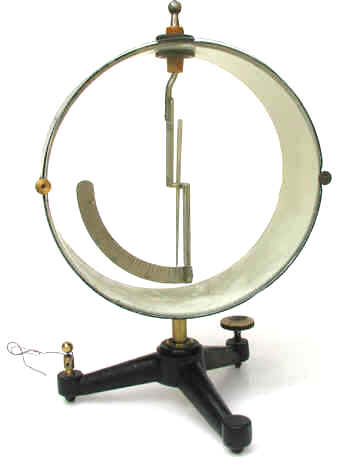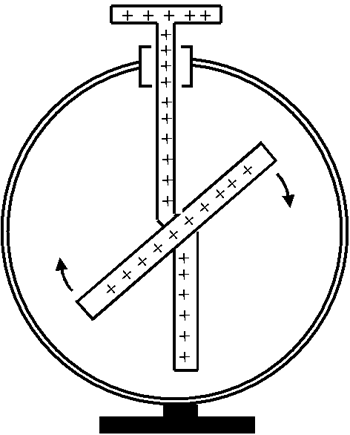Braun Electroscope (early 1900s)

This type of electroscope, created by Professor Ferdinand Braun of Tubingen Germany, is primarily used for classroom demonstrations of electrostatic phenomena. The case of Braun's original version was a box, but the one shown here is cylindrical in shape and very large (ca. 13" high) when compared to the dimensions of typical gold leaf electroscopes.
A vertical metal rod penetrates the top of the electroscope housing (through an insulator). Attached to the bottom of this rod is a curved metal scale. In this example, the electrical contact at the top of the rod is a small sphere although Volta plates are also used. A deflection arm is connected to the vertical rod by a pin through its center so that the arm is free to rotate. In its normal resting position, the deflection arm is vertical. Sometimes Braun electroscopes employ an opaque cover that has a curved opening at the bottom. This only permits the scale and tip of the deflection arm to be seen.
The makers name is written across the legs of the base: Max Kohl A.G. Chemnitz.

When the electroscope is charged, the deflection arm is repelled by the vertical rod. The greater the charge, the greater the deflection. The arm comes to rest when the repulsive coulombic force equals the gravitational force on the arm.
I would like to express my thanks to Jean-François Loude for providing the above references.
References
- Ferdinand Braun. Ueber das electrische Verhalten des Steinsalzes. Wied. (Drude) Ann. Phys. 31: 856-872; 1887.
- Ferdinand Braun. Ueber absolute Vorlesungselectrometer. Wied. Ann. Phys. Vol. ?, 771-773; 1891.
